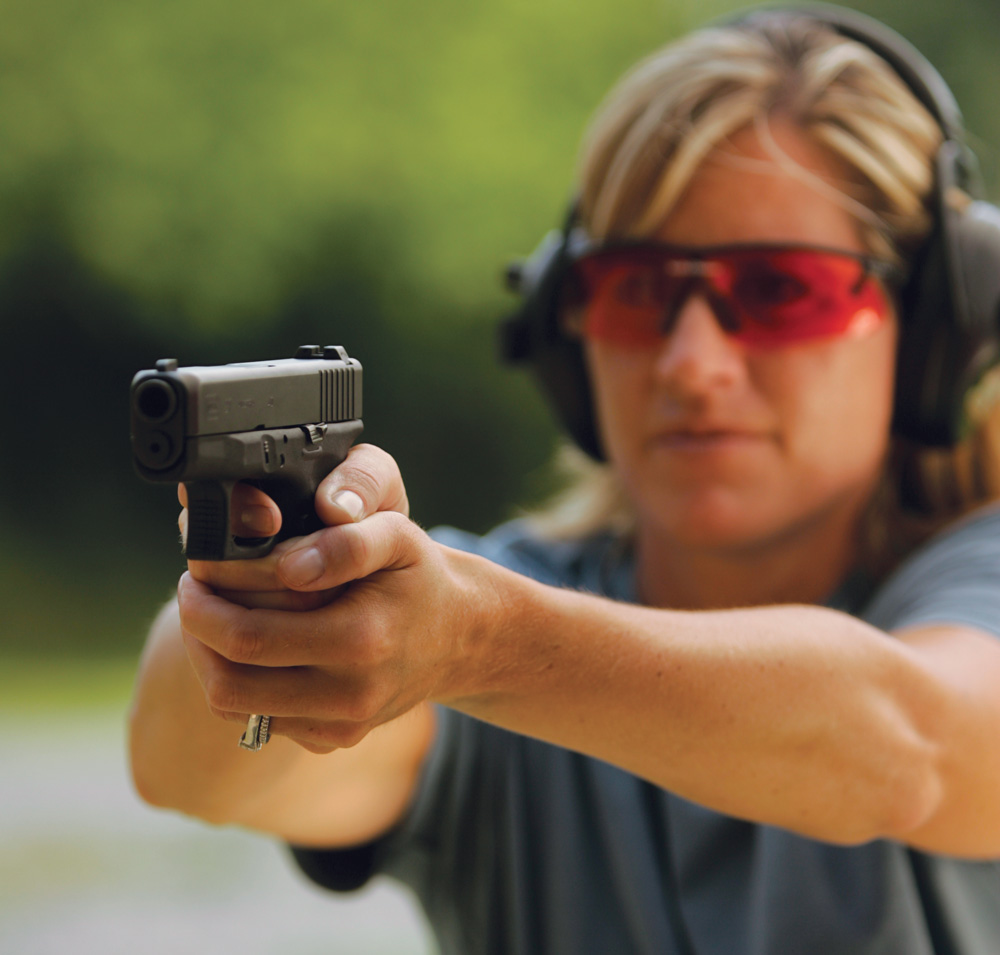At GunDigest, we independently review products. However, we may earn a commission when you purchase through links on our site. Learn More
Glock: Understanding the Striker-Fired Semi-Automatic Pistol

One of the most innovative designs in the history of handguns is the striker-fired semi-automatic pistol. But what does that mean?
Having said this, the term used to describe these guns isn’t quite correct, or perhaps it isn’t quite complete.
With the modern guns we now designate as striker-fired pistols, the energy for the striker is stored when the slide comes forward and the striker hooks on the sear, much like the tail-hook of an aircraft landing on a carrier. When the trigger is pulled, the sear lowers and allows the striker to spring forward and fire the gun.
In some guns, like the Glock, the sear moves both to the rear and then down, the slight extra rearward motion completing the cocking process and then firing the gun as it moves down.
The first commercial success in this type of pistol was the Glock 17. But the Glock wasn’t the first striker-fired pistol, or even the first polymer and striker-fired pistol. H&K produced a pistol that was polymer framed and striker fired in 1970 but it saw little commercial success.
Whether you like striker-fired guns or not, the system is here to stay, and as an enduring fan of the 1911, I’ve come to realize that striker-fired guns are much more suitable than other systems for military, law enforcement and civilians for almost every application.
Next Step: Get your FREE Printable Target Pack
Enhance your shooting precision with our 62 MOA Targets, perfect for rifles and handguns. Crafted in collaboration with Storm Tactical for accuracy and versatility.
Subscribe to the Gun Digest email newsletter and get your downloadable target pack sent straight to your inbox. Stay updated with the latest firearms info in the industry.